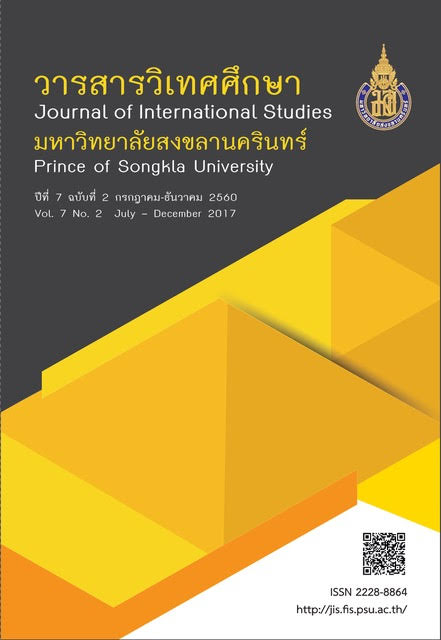Observing the trend: Performance Research in Australia
Main Article Content
Abstract
Performance as Research (PaR) has been rapidly developed and accepted within Australian Higher Education. For the last 25 years, the standard of research in the field of performing arts especially theatre and performance has been progressed and recognized by Australian Research Council. Performance research derived from various influences such as performance studies, Australian policy in education, and the group of Australian artists-researchers in academia. Although, it has also been questioning and criticizing by academics and professionals in and out of the field. Presently, performative research is a popular practice under Australian PhD and Doctoral degree in performing arts. This article intends to explore the characteristics of Performance Research in Australia based on Australasian Drama Studies Association (ADSA) policy, as well as the current trend of research in performing arts that is driven to performative research known as ‘Practice-led Research’.
Article Details
Statements and opinions expressed in articles herein are those of the authors and do not necessarily reflect the position of the editors or publisher.
Article, information, text, image, etc. which are published in Journal of International Studies, belong to Journal of International Studies. If anybody or any organization would like to use part or whole of them, they must receive written permission from Journal of International Studies before usage.
References
ธนัชพร กิตติก้อง. (๒๕๕๙). Practice as Research in Performance: การวิจัยสร้างสรรค์ด้านศิลปะการแสดง. วารสารศิลปกรรมศาสตร์, ปีที่ ๘, ฉ. ๑, (หน้า ๑๐๕ – ๑๓๐).
Australasian Association for Theatre, Drama and Performance Studies (ADSA). (1992). Appendix C ADSA Policy on Per-formance as Research. Retrieved 1 November, 2016, from www.adsa.edu.au/research/performance-as-research/appendix-c/
Hadley, B. (2013). Performance as Research Guidelines. Re-trieved 1 November, 2016, from www.adsa.edu.au/research/performance-as-research/
Harrold, R. (1991). The Unified National System of Higher Education– Action in Haste and Repentance at Leisure. Conference of the Australian Association of Research in Education.
Smith, H., Dean, R.T. (2010). Practice-led Research, Research-led Practice in the Creative Arts. Edinburgh University Press. Edinburgh.
Phillips, M., Stock, C., Vincs, K. (2008). Dancing between diversity and consistency: Refining Assessment in Postgraduate Degrees in Dance. Australia Learning and Teaching Council.
Richards, A. (1995). Performance As Research/ Research by means of Performance: A discussion paper. Retrieved 1 November, 2016, from www.adsa.edu.au/research/performance-asresearch/discussion-paper/
Richards, A. (2009). Performance as Research in Australia 1988-2007. In Allegue ,L., Jone,S., Kershaw, B., Piccini, A. Prac-tice as Research in Performance and Screen. Palgrave Macmillian, Hampshire.
Strand, D.(1998). Research in the Creative Arts. Evaluations and Investigations Programme Higer Education Division. Retrieved 27 November, 2016, from http://trove.nla.gov.au/version/45639248
Sullivan, G. (2010). Making space: The purpose and place of Practice-led Research. In Hazel, S. and Roger, T.D.(2010), Practice-led Research, Research-led Practice in the Crea-tive Arts. Edinburgh University Press. Edinburgh.
Webb, J., Brienm D.L., Burr, S. (2012). Examining Doctorates in the Creative Arts: A guide. Australian Association
of Writing Programs, Canberra.
Wilson, J. (2011). Creative Arts Research: A long path to ac-ceptance. Australian Universities Review, Vol.53, No.2. Retrieved 27 November, 2016, from http://www98.griffith.edu.au/dspace/bitstream/handle/10072/45387/77973_1.pdf?sequence=1


